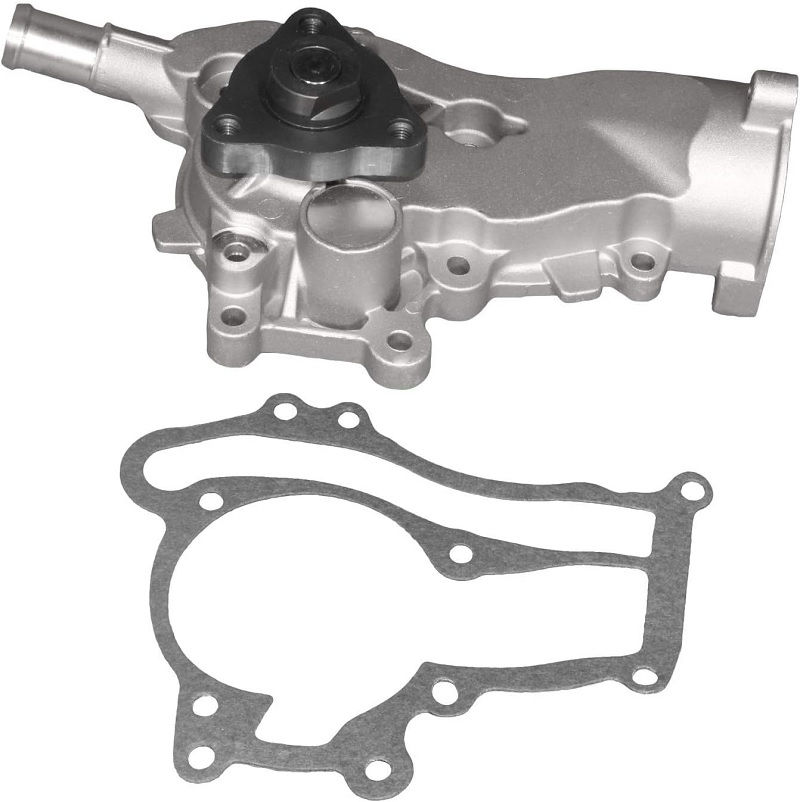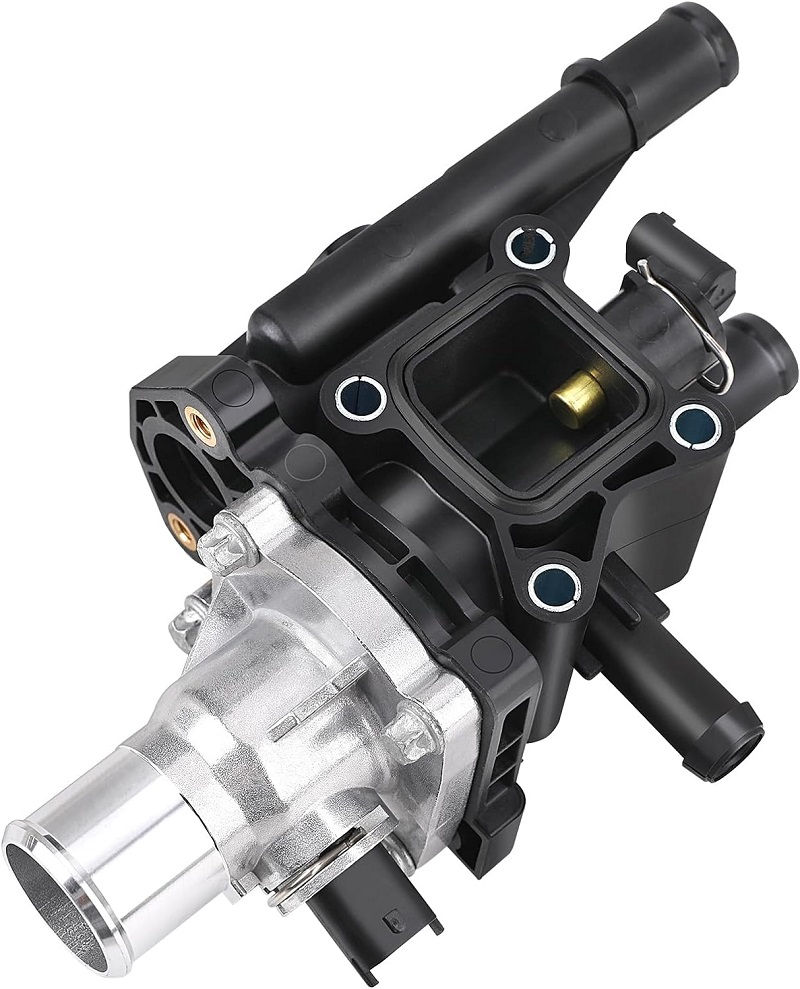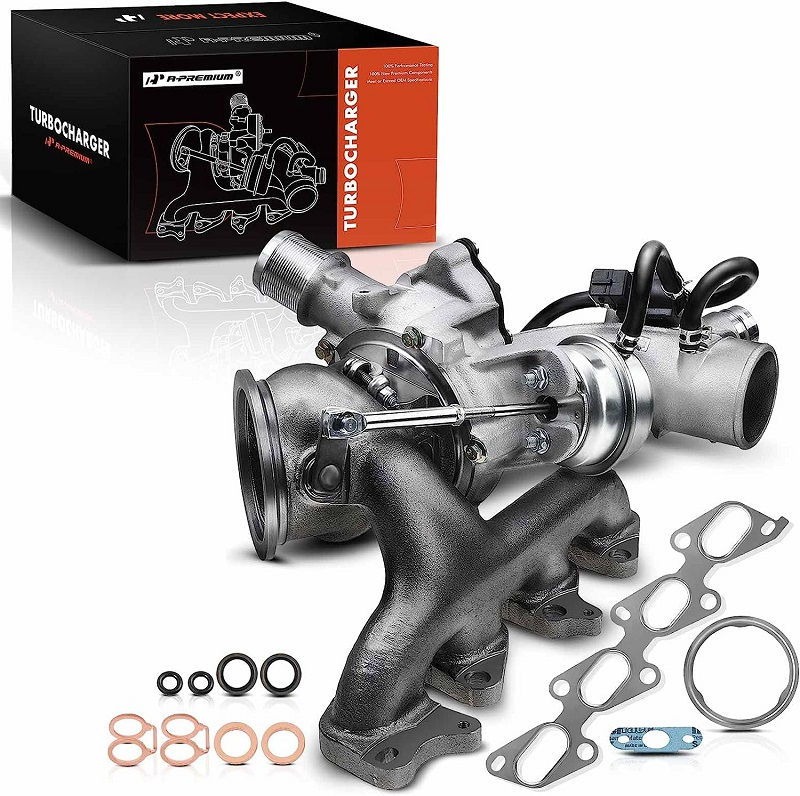This post contains affiliate links. This means I will make a commission at no extra cost to you should you click through and make a purchase [ “As an Amazon Associate, I earn from qualifying purchases.” ]. Read the full disclosure here.
2013 Chevy Cruze Water Pump GuideMechanic.Com Are you a proud owner of a 2013 Chevy Cruze? One of the crucial components of your vehicle that you need to be aware of is the water pump. A faulty water pump can lead to serious engine problems and affect the overall performance of your car.
In this comprehensive guide, we will delve into all the important details regarding the 2013 Chevy Cruze water pump, from its function to signs of failure, and even the steps for replacement. So, let’s dive in and equip ourselves with the knowledge to keep our Chevy Cruze running smoothly!
Understanding the Water Pump
Check out this ACDelco Professional 252-996 Engine Water Pump

The water pump is a vital component of the cooling system in your 2013 Chevy Cruze. Its main function is to circulate coolant throughout the engine, ensuring that it maintains an optimal temperature.
See Also: 2014 Chevy Cruze Headlight Bulb
The water pump is driven by a belt connected to the engine’s crankshaft, allowing it to pump coolant through the engine, radiator, and heater core.
How Does the Water Pump Work?
When the engine is running, the water pump circulates coolant from the radiator, which absorbs heat from the engine, to the engine block and cylinder head.
As the coolant flows through the engine, it absorbs excess heat, ensuring that the engine doesn’t overheat.
The water pump creates the necessary pressure to keep the coolant flowing, maintaining a constant temperature within the engine.
Materials and Construction
The water pump in the 2013 Chevy Cruze is typically made of high-quality materials such as cast iron or aluminum alloy.
These materials are chosen for their durability and ability to withstand the high temperatures and pressures generated by the engine.
The pump consists of an impeller, housing, bearings, and a shaft, all working together to facilitate the flow of coolant.
Signs of a Failing Water Pump
Check out this Thermostat Housing with Gasket & Sensor – Compatible

Recognizing the warning signs of a failing water pump is crucial to prevent major engine damage. Here are some common signs that indicate a potential problem with your 2013 Chevy Cruze water pump:
Coolant Leaks
If you notice coolant pooling beneath your vehicle or find traces of coolant on engine components, it may indicate a leak in the water pump.
See Also: 2012 Chevy Cruze Headlight Bulb
Coolant leaks can occur due to a faulty gasket, seal, or even a crack in the pump housing. It’s important to address these leaks promptly to prevent overheating and engine damage.
Engine Overheating
An overheating engine is a clear indication that something is wrong with the cooling system, and the water pump could be the culprit.
If your temperature gauge consistently shows high readings or the engine starts to emit steam, it’s essential to check the water pump for any issues.
Unusual Noises
Pay attention to any unusual noises coming from the front of your engine. A failing water pump may produce a whining, grinding, or squeaking sound.
These noises can be caused by worn-out bearings or a loose impeller, indicating the need for immediate inspection and potential replacement.
Coolant Discoloration
If you notice that the coolant in your 2013 Chevy Cruze has turned rusty, milky, or contains oil deposits, it could be a sign of a water pump problem.
Contaminated coolant can result from a failing water pump seal, which allows oil or other fluids to mix with the coolant. This issue needs to be addressed promptly to prevent further damage to the engine.
Diagnosing a Faulty Water Pump
If you suspect a problem with your water pump, it’s essential to diagnose the issue accurately. Here are some steps to help you identify a faulty water pump in your 2013 Chevy Cruze:
Visual Inspection
Start by conducting a visual inspection of the water pump, looking for any signs of leaks, cracks, or damage to the housing. Check the area around the pump for coolant stains, as this may indicate a leak. Additionally, inspect the drive belt connected to the water pump for any signs of wear or damage.
Pressure Testing
A pressure test can help pinpoint any leaks or issues within the cooling system, including the water pump.
See Also: Engine Power Reduced Chevy Equinox
This test involves using a pressure tester to pressurize the cooling system and observing if there is any drop in pressure. A significant pressure drop could indicate a leak in the water pump or other components.
Checking for Play in the Pump Shaft
Excessive play or wobbling in the water pump shaft can indicate a problem with the bearings or impeller. To check for play, you can try moving the pump shaft back and forth or up and down. If there is noticeable movement, it’s a sign that the water pump may need replacement.
Temperature Fluctuations
Monitoring the temperature gauge in your vehicle can provide valuable insights into the health of your water pump.
If you notice frequent fluctuations in temperature, with the gauge moving from normal to high and back, it could indicate an issue with the water pump’s ability to circulate coolant efficiently.
Water Pump Replacement Process
Check out this A-Premium Complete Turbo Turbocharger with Gasket Kit Compatible with Chevy Chevrolet Cruze

If you determine that your 2013 Chevy Cruze water pump needs replacement, it’s important to follow the proper steps to ensure a successful installation. Here is a step-by-step guide to help you through the process:
Gather the Necessary Tools
Before starting the replacement process, make sure you have all the required tools on hand. Some common tools you may need include a socket set, wrenches, pliers, a coolant drain pan, and a new water pump specific to your 2013 Chevy Cruze model.
Prepare the Vehicle
Park your vehicle on a level surface and engage the parking brake. Open the hood and locate the water pump, which is typically situated near the front of the engine. It may be necessary to remove other components or parts to gain access to the water pump.
Drain the Coolant
Start by draining the coolant from the cooling system to prevent any spills or leaks during the replacement process.
Place a coolant drain pan beneath the radiator drain plug and remove the plug to drain the coolant. Ensure that the engine is cool before attempting this step.
Remove the Old Water Pump
Disconnect the negative battery cable to ensure safety during the replacement process. Remove any components that obstruct access to the water pump, such as belts or pulleys.
See Also: Chevy Truck Losing Power When Accelerating
Once the pump is visible, disconnect the hoses and electrical connections attached to it. Loosen and remove the bolts securing the water pump to the engine block, and carefully remove the old water pump.
Install the New Water Pump
Clean the mounting surface on the engine block thoroughly to ensure a proper seal with the new water pump. Apply a thin layer of gasket sealer or coolant-resistant silicone to the new water pump’s mounting surface.
Carefully position the new water pump in place and hand-tighten the bolts. Follow the manufacturer’s specifications for torque settings and sequence to ensure proper installation.
Reassemble and Refill
Reinstall any components that were removed to access the water pump, such as belts or pulleys. Reconnect the hoses and electrical connections to the new water pump.
Once everything is securely in place, refill the cooling system with the appropriate type and amount of coolant recommended for your 2013 Chevy Cruze.
Test for Leaks
After replacing the water pump, it’s crucial to check for any coolant leaks. Start the engine and observe the area around the water pump for any signs of leakage. Monitor the coolant levels and temperature gauge to ensure that the cooling system is functioning properly.
Maintenance Tips for a Healthy Water Pump
Proper maintenance is key to ensuring the longevity and optimal performance of your 2013 Chevy Cruze water pump. Here are some essential maintenance tips to keep your water pump in excellent condition:
Regular Coolant Checks
Monitor the coolant levels and quality regularly. Check for any signs of discoloration, contamination, or leaks. If you notice any issues, address them promptly to prevent further damage to the water pump and the cooling system.
Belt Tension Inspection
Periodically inspect the drive belt connected to the water pump for proper tension. Over time, the belt may stretch or wear out, affecting the water pump’s performance. Adjust or replace the belt as necessary to ensure optimal operation.
Recommended Replacement Intervals
While there is no specific mileage or time frame for water pump replacement in the 2013 Chevy Cruze, it is generally recommended to replace the water pump every 60,000 to 90,000 miles or as specified in the vehicle’s maintenance schedule. Regularly check the manufacturer’s recommendations for your specific model.
OEM vs. Aftermarket Water Pumps
When it comes to replacing your water pump, you have the option of choosing between Original Equipment Manufacturer (OEM) water pumps or aftermarket alternatives. Here’s a comparison to help you make an informed decision:
OEM Water Pumps
OEM water pumps are manufactured by the same company that produced the original water pump installed in your 2013 Chevy Cruze.
These water pumps are designed to meet the exact specifications and quality standards set by the vehicle manufacturer.
Opting for an OEM water pump ensures compatibility and reliability, as they are specifically engineered for your vehicle’s make and model. Additionally, OEM water pumps often come with a warranty, providing added peace of mind.
Aftermarket Water Pumps
Aftermarket water pumps are produced by third-party manufacturers and offer an alternative to OEM options. These water pumps may vary in terms of quality, price, and performance.
See Also: 2011 Chevy Cruze Headlight Bulb
While some aftermarket water pumps may be of comparable quality to OEM, others may not meet the same level of durability and precision.
It’s important to research and choose reputable aftermarket brands that have a proven track record of producing reliable water pumps.
Considerations
When deciding between OEM and aftermarket water pumps, consider factors such as your budget, the specific needs of your vehicle, and your preferred level of warranty coverage.
OEM water pumps generally come at a higher price point due to their brand reputation and quality assurance.
However, aftermarket options may offer a more cost-effective solution while still providing satisfactory performance.
It’s crucial to choose a water pump that meets the necessary specifications and is compatible with your 2013 Chevy Cruze.
Cost of Water Pump Replacement
The cost of replacing a water pump in a 2013 Chevy Cruze can vary depending on several factors, including the brand of the water pump, labor charges, and any additional parts required for the replacement. Here’s a breakdown of the average costs involved:
Water Pump Price
The price of a water pump can range from $50 to $200 or more, depending on whether you choose an OEM or aftermarket option.
OEM water pumps generally come at a higher price due to their quality and brand reputation, while aftermarket options may offer more affordable alternatives without sacrificing performance.
Labor Charges
The labor charges for water pump replacement can vary depending on the mechanic or repair shop you choose.
On average, you can expect to pay between $200 and $500 for labor, depending on the complexity of the replacement process and the location of the water pump in the engine. It’s advisable to obtain quotes from multiple mechanics to ensure a fair price for the labor component.
Additional Parts
In some cases, additional parts may be required during the water pump replacement process. These can include gaskets, seals, coolant, and other components necessary for a proper installation. The cost of these additional parts will depend on their specific requirements and can vary accordingly.
Total Cost
Considering the average price range for water pumps and labor charges, the total cost of water pump replacement in a 2013 Chevy Cruze can range from $300 to $800 or more.
It’s important to obtain estimates from reputable mechanics or repair shops to get an accurate cost based on your specific location and requirements.
Common Questions About the 2013 Chevy Cruze Water Pump
Here are answers to some common questions that Chevy Cruze owners may have regarding their water pump:
Is the Water Pump Covered Under Warranty?
Typically, the water pump is not covered under the vehicle’s standard warranty, as it is considered a wear and tear item. However, it’s essential to review the terms and conditions of your specific warranty coverage to confirm whether the water pump or related components may be included.
How Often Does the Water Pump Need Replacement?
The lifespan of a water pump can vary depending on various factors, including driving conditions, maintenance practices, and the quality of the pump itself. Generally, water pumps may last between 60,000 and 100,000 miles. It’s crucial to follow the manufacturer’s recommendations and consult your vehicle’s maintenance schedule for specific guidelines on water pump replacement.
Can I Replace the Water Pump Myself?
Replacing a water pump can be a complex task that requires mechanical knowledge and the right tools. If you have prior experience working on automotive repairs and feel confident in your abilities, it is possible to replace the water pump yourself.
However, it’s important to follow the proper procedures outlined in your vehicle’s service manual and take all necessary safety precautions. If you’re unsure or uncomfortable with the process, it’s advisable to seek professional assistance from a qualified mechanic.
Tips for Choosing a Reliable Mechanic
When it comes to water pump replacement or any automotive repairs, finding a trustworthy mechanic is crucial. Here are some tips to help you choose a reliable mechanic for your 2013 Chevy Cruze:
Research and Recommendations
Start by conducting thorough research and seeking recommendations from friends, family, or online reviews. Look for mechanics or repair shops that specialize in Chevy or GM vehicles, as they are likely to have the expertise and experience working on your specific make and model.
Certifications and Credentials
Check if the mechanic or repair shop holds any relevant certifications or credentials, such as Automotive Service Excellence (ASE) certification. These credentials indicate that the mechanic has undergone rigorous training and meets specific industry standards.
Transparent Communication
Choose a mechanic who communicates clearly and transparently about the repairs needed, the estimated costs, and any other relevant details. They should be willing to answer your questions and provide explanations in a way that you can understand.
Warranty and Guarantees
Inquire about the warranty or guarantees offered by the mechanic or repair shop for their services, including the water pump replacement. A reputable mechanic should stand behind their work and offer a warranty on parts and labor.
Price Comparisons
Obtain multiple quotes from different mechanics or repair shops to compare prices. However, keep in mind that the cheapest option may not always be the best choice. Consider the reputation, expertise, and overall quality of service offered by the mechanic.
Upgrading Your Water Pump
For those looking to enhance the performance of their 2013 Chevy Cruze, upgrading the water pump can be an option. Here are some points to consider before making an upgrade:
High-Performance Aftermarket Options
High-performance aftermarket water pumps are designed to provide improved cooling efficiency and better flow rates compared to stock water pumps.
These pumps may feature enhanced impeller designs, more durable materials, and optimized cooling capabilities. Upgrading to a high-performance water pump can be beneficial for those seeking improved engine cooling and potentially increased horsepower.
Compatibility and Fitment
Before purchasing an aftermarket water pump, ensure that it is compatible with your 2013 Chevy Cruze model.
Consider factors such as the engine type, cooling system specifications, and any modifications made to the vehicle. It’s advisable to consult with a knowledgeable mechanic or contact the manufacturer of the aftermarket water pump to confirm fitment.
Consider the Overall Cooling System
Upgrading the water pump alone may not provide significant improvements if other components of the cooling system are not optimized.
Consider the condition of the radiator, thermostat, hoses, and other cooling system parts. A comprehensive approach to upgrading the cooling system may yield better results in terms of overall performance and efficiency.
In conclusion, understanding the function, signs of failure, and proper maintenance of the water pump in your 2013 Chevy Cruze is crucial for preserving the health and performance of your vehicle.
Whether you choose to replace the water pump yourself or seek professional assistance, it’s important to follow the recommended guidelines and choose a reliable mechanic. Consider your options for OEM or aftermarket water pumps and weigh the benefits and costs.
By staying informed and proactive, you can ensure that your 2013 Chevy Cruze water pump operates optimally, keeping your engine cool and your vehicle running smoothly for years to come.
- Seafoam Catalytic Converter Cleaner: It Work & How to Use It? - April 18, 2025
- Rislone Catalytic Converter Cleaner: What It Is, How It Works - April 18, 2025
- Wynn’s Catalytic Converter Cleaner 325ml - April 17, 2025
